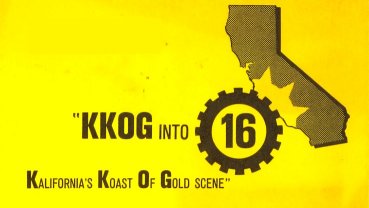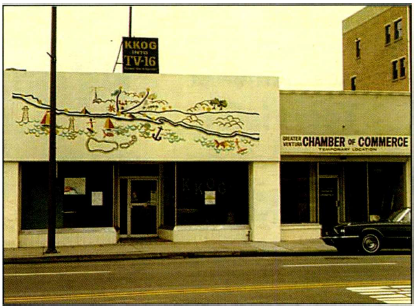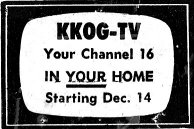

 |
Photo was taken shortly before the building was razed in 1970; it appeared in the April 2004 issue of the amateur radio magazine Popular Communications. |
 KKOG-TV finally went on the air at 2:15 on the rainy afternoon of December 14, 1968 ... and lost its video signal five minutes later. It was restored after a fifteen-minute delay, but numerous other technical glitches marred the first two hours of the debut broadcast day. Julian Myers, asked about this many years later*, said “we hadn't had a chance to adequately test the equipment, which had been installed barely one month before.” He added: “If the CP hadn't been expiring that day, we probably would have waited until the first of January.”
KKOG-TV finally went on the air at 2:15 on the rainy afternoon of December 14, 1968 ... and lost its video signal five minutes later. It was restored after a fifteen-minute delay, but numerous other technical glitches marred the first two hours of the debut broadcast day. Julian Myers, asked about this many years later*, said “we hadn't had a chance to adequately test the equipment, which had been installed barely one month before.” He added: “If the CP hadn't been expiring that day, we probably would have waited until the first of January.”